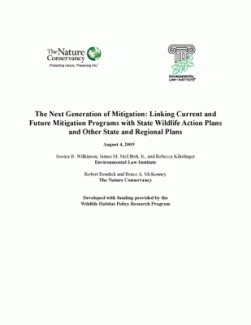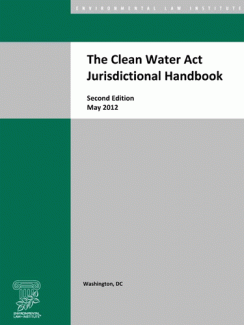ELI's Wetlands Research and Policy Analysis
The Environmental Law Institute's groundbreaking research on wetlands law and policy continues to examine federal and state protections for aquatic resources, including developments in federal Clean Water Act jurisdiction and tools for local wetlands protection.
Priority Areas of Expertise and Resources:
Hazard Mitigation Planning
Recently, increased emphasis has been placed on non-structural and nature-based hazard mitigation solutions, including the restoration of wetlands and floodplains, as cost-effective alternatives for flood hazard mitigation that also help achieve conservation goals like maintaining biodiversity. FEMA hazard mitigation grant programs could provide potential funding that could pay for the restoration and protection of critical natural infrastructure and improve outcomes and reduce costs from the next disaster.
The Next Generation of Mitigation: Executive Summary

The Federal Wetland Permitting Program: Avoidance and Minimization Requirements

Significant attention has been paid over the past 20 years to improving the third step in the mitigation sequencing requirement of the Clean Water Act § 404 regulatory program—-compensatory mitigation—-to ensure that the compensation being provided is ecologically effective, self-sustaining, protected in perpetuity, has “assurances of long-term sustainability and stewardship,” and ultimately meets the program’s goal of no net loss. This report focuses on the first two steps in the sequencing process which, to date, have received far less attention: avoidance and minimization.
Planner's Guide to Wetland Buffers for Local Governments

The upland area surrounding a wetland – the wetland buffer – is essential to its health and survival. Healthy wetlands and buffer areas help to control flooding, protect water flows, conserve native plants and wildlife, and support nature-friendly land use and development. Local governments are often better situated than state and federal environmental authorities to control activities on the lands that surround wetland resource areas, because they are not just concerned with wetland functions, but also with surrounding land uses and the benefits wetlands provide for their communities.
A Handbook for Prioritizing Wetland and Stream Restoration and Protection Using Landscape Analysis Tools

A Handbook for Prioritizing Wetland and Stream Restoration and Protection Using Landscape Analysis Tools (2013), provides states, tribes, and local governments with information about the range of tools used by wetland programs across the country to prioritize wetlands and streams for restoration and protection. The handbook is intended to help guide the development, establishment, and refinement of approaches for identifying restoration and protection priorities.

